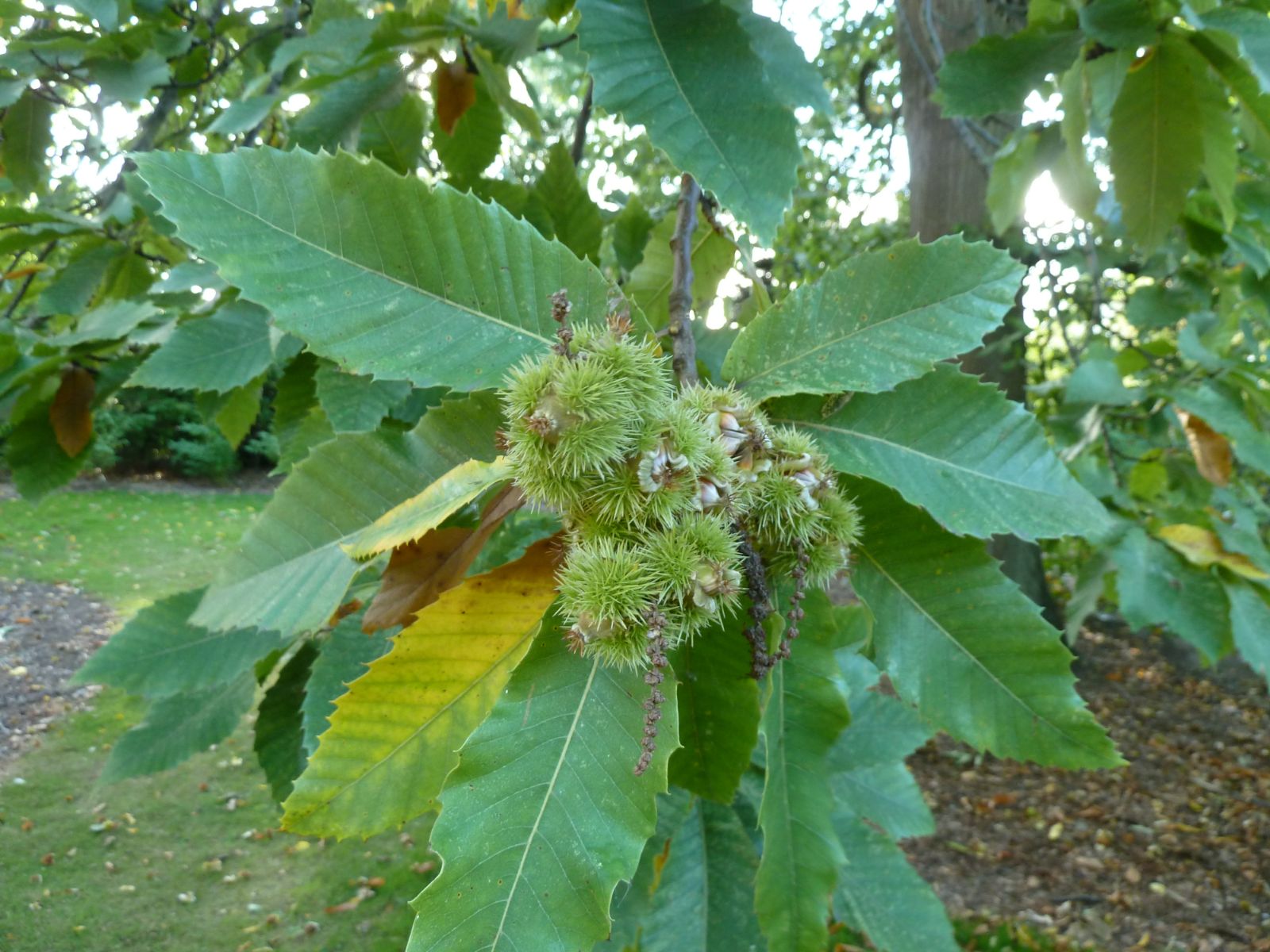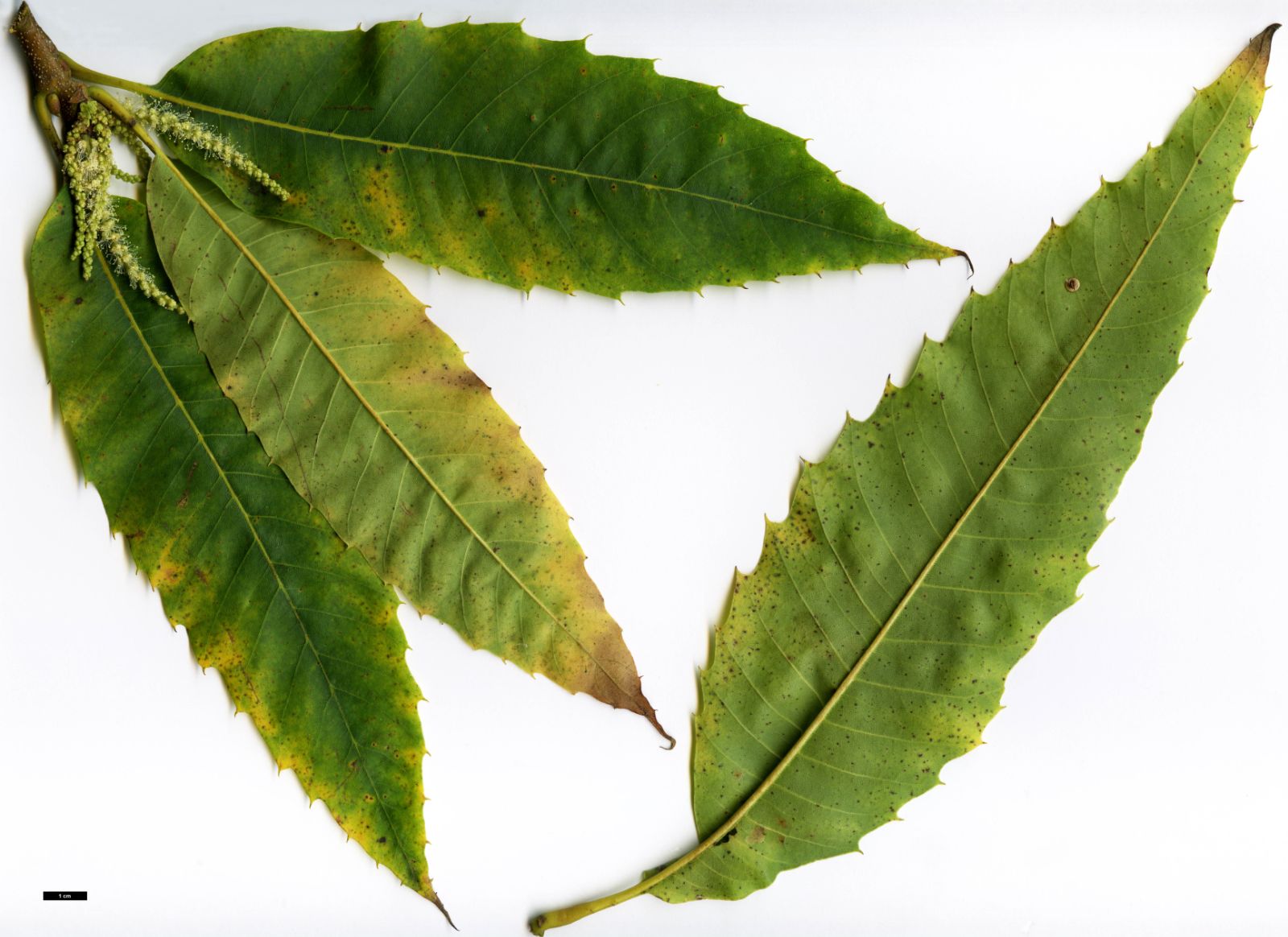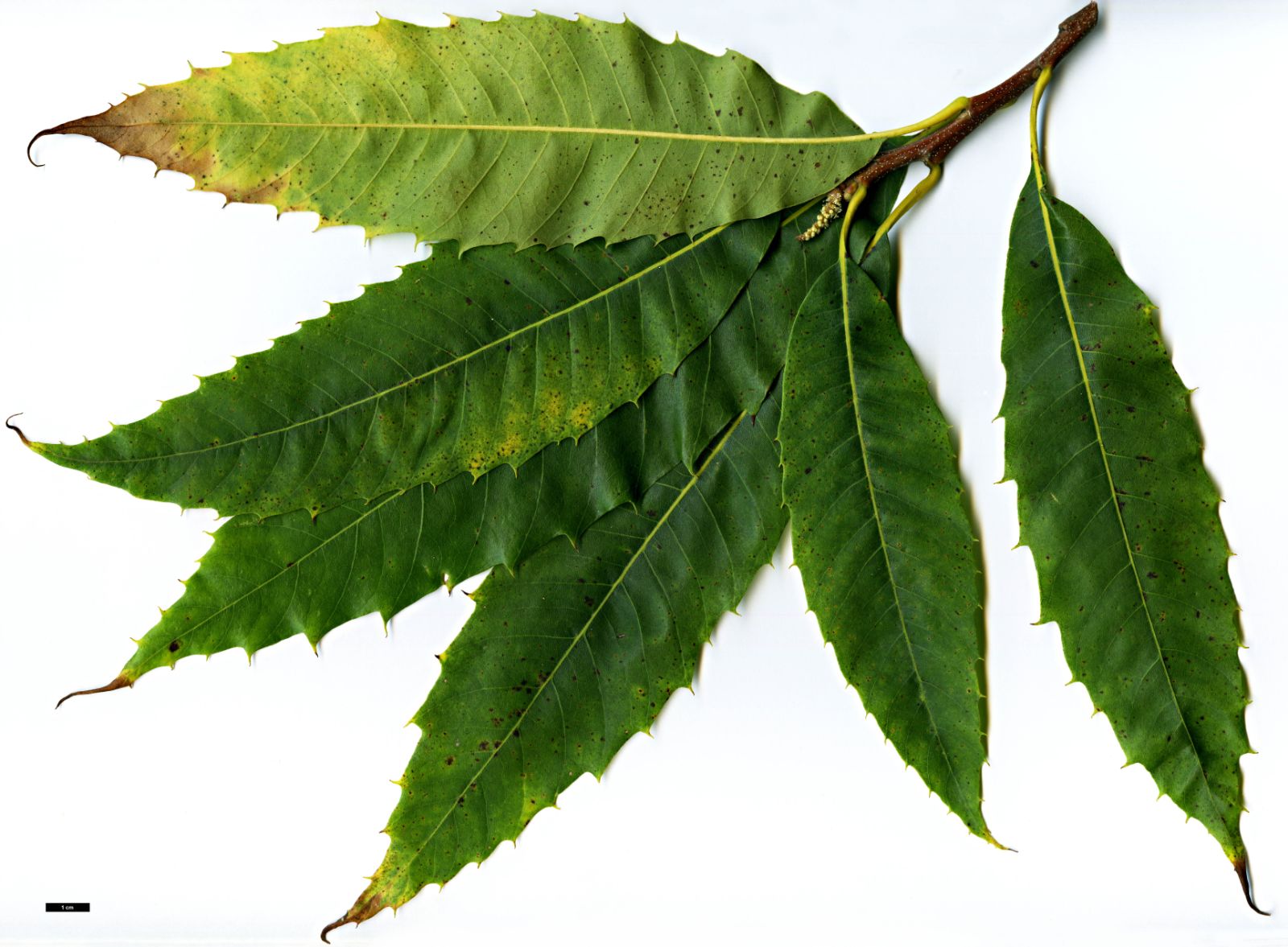Castanea dentata
Credits
Article from Bean's Trees and Shrubs Hardy in the British Isles
Recommended citation
'Castanea dentata' from the website Trees and Shrubs Online (treesandshrubsonline.
Genus
Common Names
- American Chestnut
Synonyms
- Fagus-castanea dentata Marsh
- Castanea americana Raf.
A tree occasionally 100 ft high in N. America, with the trunk and habit of the Spanish chestnut, but with, perhaps, scarcely so spreading a head; young shoots glabrous except for a dust-like scurf. Leaves dull green, narrowly oblong, tapering about equally at both ends, 6 to 9 in. long, 13⁄4 to 2 in. wide, coarsely toothed except at the base; both surfaces glabrous; stalk about 1⁄2 in. long. Catkins 6 to 8 in. long. Fruit as in the European species, consisting of a bur of numerous, branched, slender spines enclosing one to three nuts.
A native of eastern N. America, now on the verge of extinction by the chestnut blight, known to scientists as Endothia parasitica. The disease entered the U.S.A. from E. Asia at the end of the nineteenth century and spread so rapidly that today hardly a healthy mature tree remains. Trees killed to the ground frequently throw coppice shoots which for a time appear healthy and even bear fruit, but sooner or later these in their turn are overcome. So far, no resistant strain has been discovered and it now seems that the total extinction of the American chestnut is only a matter of time. The loss to the forests and landscapes where it once thrived is irreparable, but as a nut-bearing and timber tree its place may eventually be taken by hybrids between it and the Asiatic C. crenata and C. mollissima, or by selected forms of these species; both, and especially the former, are comparatively resistant to the disease.
The date of introduction of this species to Britain is not recorded. It is very rare in cultivation in this country, although a tree at Kew, now 50 ft high, thrives well. The leaves differ from those of C. sativa in the uniformly tapered base and in being narrower in proportion to their length. They are never clothed beneath with a close, thick down, as those of C. sativa and C. crenata often are. In the U.S.A. its fruit has been replaced by imports from Europe; they are smaller than those of the Spanish chestnut, but said to have a superior flavour.




